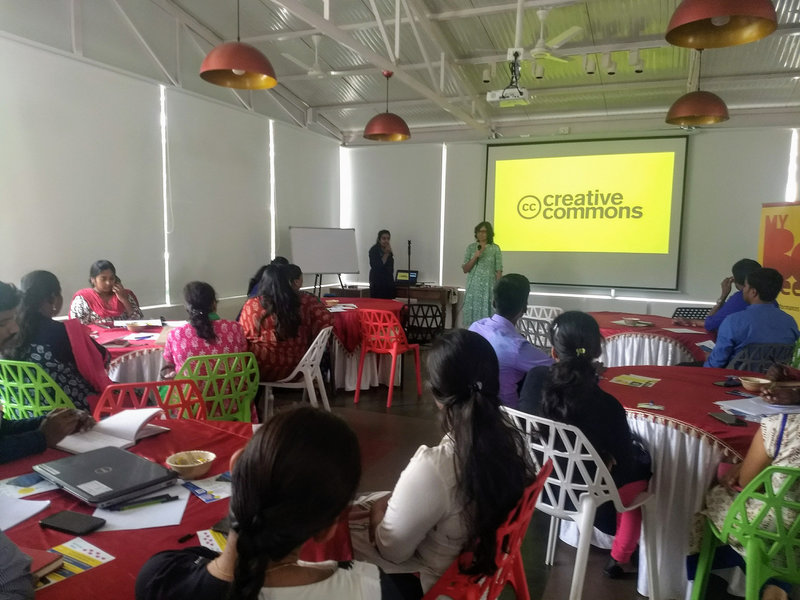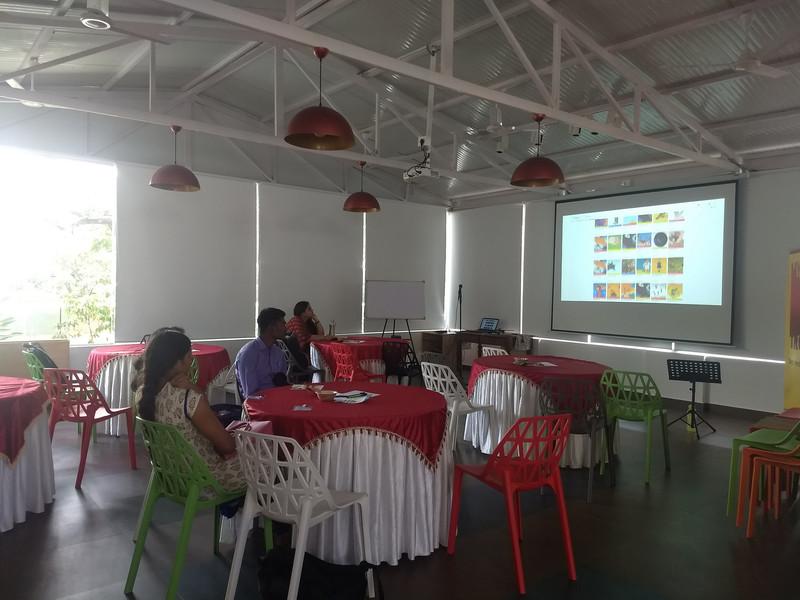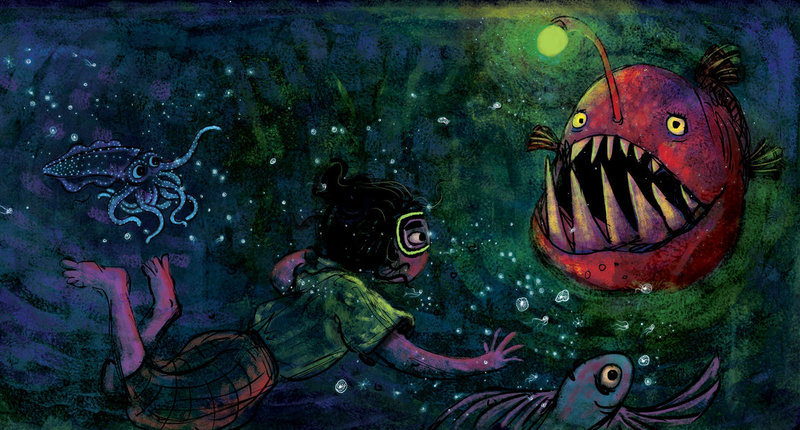We are looking for an Assistant Project Manager to join our team!
Posted by Pallavi Krishnan on December 27, 2018Pratham Books is a not-for-profit children's book publisher that was set up in 2004 to publish good quality, affordable books in many Indian languages. Our mission is to see ‘a book in every child’s hand’ and we have spread the joy of reading to millions of children in India. As a publisher serving every child in India, Pratham Books has always pushed the boundaries when it comes to exploring innovative ways in which to create access to joyful stories and have been fortunate in finding partners to collaborate with who share this vision.
In 2015, Pratham Books' increased its footprint by going digital. As an industry leader, we were one of the first publishers in the country to open license our content. All this content is now available on StoryWeaver, which is a digital platform that hosts stories in languages from India and beyond, so that every child can have an endless stream of stories in her mother tongue to read and enjoy. The stories can be read, translated, versioned or downloaded for free. All stories on the platform are openly licensed.
 Illustration by Kabini Amin from Dum Dum-a-Dum Biryani by Gayathri Tirthapura
Illustration by Kabini Amin from Dum Dum-a-Dum Biryani by Gayathri Tirthapura
We are looking for an Assistant Project Manager - Storyweaver
This position will work closely with the StoryWeaver content team to support the expansion of StoryWeaver’s global language content footprint. The role would involve identifying and nurturing partner relationships for content in languages, supporting core team to maximise partner engagement and support reporting and documentation. Must be someone who has the ability to network and make connections and is up to date with tech and social media trends. They also need to build strong relationships remotely. As nurturing language communities is a key focus area, a love for languages will help in bringing passion and commitment.
Key Responsibilities
- Project level support and coordination across various stakeholders to ensure timely completion of project deliverables.
- Identify and nurture partnership networks for language content.
- Support the core team in follow up on contracts, reporting, documentation and campaign processes.
- Support and facilitate translation workshops for scaling quality language resources on the platform.
- Work closely with the internal teams to implement StoryWeaver’s language goals.
- Help with research and documentation for impact assessment from content partner orgs.
- Contribute new ideas for both the function and platform.
- Support platform feature enhancements through testing.
Required skills
- Proven experience as a Project manager
- Ability to network and make connections
- Excellent organization skills
- Familiar with latest technology, trends in Social Media.
- Excellent communication skills in English and any other Indian language
- Willingness to travel to all project locations
- 1-2 years of experience
Nice to have but not mandatory:
- Interest in languages, communities, books and education
- Social sector experience
- Fluency in the 2-3 languages
Location:
This is a full-time position based out of Bangalore
Compensation:
Salary will be commensurate with qualification and experience.
Write to us:
Email your resume with Assistant Project Manager- Storyweaver in the subject line to [email protected]
Be the first to comment.StoryWeaver in Action: My First Workshop
Posted by Remya Padmadas on October 15, 2018
Bhavini Pant, Assistant Editor, StoryWeaver attended and helped conduct her first ever StoryWeaver workshop last month in Bengaluru. She shares her experience in this blog post.
Working behind the scenes of StoryWeaver can be unpredictable. On some days, things seem calm and almost monotonous. On other days, I can't believe I'm working for a tech platform given how things decide to work (or stop working) quite randomly. In between the zeros and ones, I'm certain there's a cheeky monster laughing at us when we splutter, "But.. but.. this isn't supposed to be happening!"
Unpredictable as the days may be, it can become a little routine spending time in front of a screen. When I was invited for my first StoryWeaver workshop on 6 September, I was happy for the chance to step out of office and meet new faces. This workshop was one of the many conducted by our Partnerships team to introduce StoryWeaver to educators. New recruits to StoryWeaver are also encouraged to participate to fully understand the platform and how new users experience StoryWeaver.
The venue was a large, but cosy space on the terrace of a building in Koramangala, Bengaluru. People from a wide variety of organisations had signed up for the workshop. They represented different aspects of education, technology and child welfare which made for an interesting assortment of participants. There was ChildFund India (who work with children as young as 1 year olds), Meghshala (who empower teachers to go beyond textbooks and provide quality education), eVidyaloka Trust (who empower rural India through quality education using technology), Gubbachi Learning Community (who work on bridge learning programmes for school drop-outs) and Caring With Colour (who work on arts integration and activity-based learning). Some participants had travelled all the way from Mysore (Pratham, Learning Spaces) and Hyderabad (Aga Khan Foundation) for the workshop!
As participants started trickling in, some confident, some a little nervous I was reminded of my previous job where I would take workshops with educators on a fiction-reading program for school children. Teachers are almost unthinkingly expected to take the lead in a classroom. When I was teaching, I often missed the luxury of learning that comes with being a student. I imagine that some of the participants felt the same, for they welcomed the chance to be learners again: asking questions, developing and sharing their insights, putting pieces together.

Initially when one of the facilitators began demonstrating StoryWeaver by telling us a story from the platform, my attention was drawn to her narration. And then, quite by chance, my gaze slid to the participants. I was thrilled to see them smiling along with the story. My heart smiled with them. It felt wonderfully uplifting to see participants' eyes light up, to see them laugh quietly during the funny bits. When a Read-Along story was demonstrated, lots of participants shared different ways they could anticipate educators using the feature. It was heartening to see educators explaining cross-disciplinary uses for Read-Along stories – that while the storyline could be used to introduce say, a mathematical concept to children, the narration and highlighted words could be used to demonstrate pronunciation, grammar and other language concepts.
Once the participants began working on their own stories, the space was buzzing with questions, suggestions and observations. Translated stories, in particular invited much discussion among the teachers. They debated the choice of words and their reasons for why a certain word should or should not be used. Eventually, some participants chose to translate the same story on their own as part of the exercise on creating a story!
The workshop was a good chance for me to cleanse my content manager palate. While we’re constantly working on increasing content on StoryWeaver for our users, I was able to see how a person new to StoryWeaver could be overwhelmed at the prospect of browsing through 9,000+ stories. We’re continually trying to make the experience of searching for stories faster and easier. Apart from filters, the teachers were also introduced to Lists - a section on StoryWeaver which has curated sets of stories based on areas which are relevant both in the classroom and outside it. Bright and colourful Category Cards (which appear when you scroll down the home page a little) also help organise all stories on the platform. Since the categories reflected subjects (eg. History & Culture) as well as broad themes (eg. Humour), we could see educators nodding and smiling satisfactorily.
In the end, when participants were filled with glee and pride to see their published story showing up on ‘New Arrivals’, we shared their thrill of creating something original.
As a former teacher, it was deeply moving for me to see educators taking control of the kind of material they would like to use and create for their children. Teachers are often expected to effect far-reaching changes in children but are not supported or encouraged as much as they need to be. Hopefully, StoryWeaver can be a space that addresses this imbalance while being easy and fun to use.
Be the first to comment.Author Interview: Marine Biologist Shreya Yadav on writing her first picture book and spying on underwater creatures
Posted by Yamini Vijayan on January 04, 2019In The Night the Moon Went Missing, written by Shreya Yadav and illustrated by Sunaina Coelho, a young girl sets out on a grand adventure to find her missing friend. Shreya is a marine biologist who studies coral reefs. One of her favourite things to do is cling onto a rock underwater and spy on all the fish and plants and crabs and coral that live there.
In this short interview, Zeba Imtiaz, assistant editor at Pratham Books, talks to Shreya about life under water, her favourite children's books and the process of writing The Night the Moon Went Missing, a truly enchanting picture book.
Excerpts from the interview:
How did your interest in the ocean and creatures in the ocean begin?
Growing up in Madras, the Bay was always quite central to our lives. My brother and I would trot off to the beach every other day after school and spend hours in the water. We lived very close by - there was always a sliver of the ocean visible from our balcony - so I think we took the salt and sand for granted. I started diving when I was 19 on a family holiday to the Andaman islands. My father, who SCUBA dives, asked if I wanted to do my beginner course at Havelock island. I remember seeing an octopus and an eel and all kinds of other impossibly bizarre life on my first dive and being totally blown away. Even though I was studying zoology at the time, that was the first time I really wondered about the ecology of a coral reef without it being some kind of abstract concept.

If you had to pick, which would be your favourite ocean creature, and why?
I definitely have a thing for the small and cryptic critters that live on a reef. Often, I will be swimming over something, and will catch a tiny eye peering at me from behind something. I always wonder what their lives are like. Blennies and gobies are probably my favourites.

What sort of books did you read as a child? What was your favourite book growing up?
I was lucky to grow up with great books and a family that enjoyed dramatic readings of them! I remember being obsessed with Ekki-Dokki (Sandhya Rao; Tulika) when I was very little and then by a book called Trash! (Anushka Ravishankar and Gita Wolf; Tara Books) when I was a bit older. I also read a lot of Roald Dahl. I think I found Quentin Blake's illustrations very weird as a kid, but there was something so different about them that it was hard to put down.
What was your writing process for your book The Night the Moon Went Missing?
I think we had discussed that bioluminescence would be an interesting topic to explore for this book, but the story actually took a while to come. I knew I wanted it to be taking place on an island and I had a list of creatures I thought were interesting in terms of their biology, but I didn't know how to make it all come together. I think it finally came to me after a few conversations on the phone with friends - saying things out loud always helps.
Later, when I read the first draft out to my parents, my mother told me it reminded her of a story my great-grandmother had written for children which also involved the moon and three young girls on a nighttime adventure. As soon as she said it I remembered that book. Now I feel like I subconsciously plagiarized my great-grandmother!
What was you favourite part of writing this story? What was the most challenging bit?
I had so much fun writing this. I think the most challenging bit was trying to stick to the word limit - I was worried that it would be hard to visualize in so few words, since it was all taking place underwater at night with a bunch of strange glowing animals. But Sunaina's beautiful illustrations more than took care of that. I think my favourite thing about the book now are her illustrations.

If you were to write another children's book, what would it be about?
I think it would be fun to profile a bunch of marine critters in limerick form, Ogden Nash style.
Do you think your childhood was different from how children live today?
I'm not sure - I have a feeling everyone who is asked this question will probably say yes. I remember having a lot of time in the day to play and climb trees and run around the beach and I hope that that is still the case today.
Who are some of the authors you enjoy reading today?
Big fan of Italo Calvino, Jorge Luis Borges, Loren Eisley, Peter Godfrey-Smith, Robert Macfarlane, WS Merwin.
Any favourite illustrators?
Closer to home, I really like the work of Sonali Zohra, Renuka Rajiv, Vinayak Varma, Orijit Sen, Sarnath Banerjee and the geniuses behind Crocodile in Water, Tiger on land - whoever they are.
Have you read The Night the Moon Went Missing? It is available on StoryWeaver for free, in English, Kannada, Marathi, Tamil and Hindi, and will soon be available in print.
Be the first to comment.